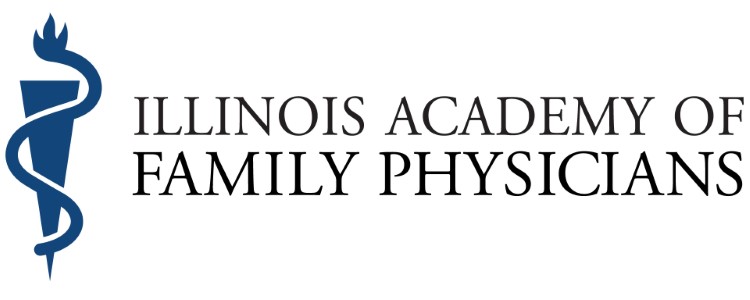- Home
- About IAFP
- Membership
- Education
- Resources
- COVID-19
- Practice Management
- Adults & Seniors
- Behavioral Health
- Cancer
- Children & Teens
- Diabetes
- Health Equity
- Healthy Lifestyle
- Immunizations/Vaccines
- Infection Control
- Influenza
- Medical Cannabis
- Partner in Health Resources
- Obesity
- DIY Community Outreach
- Opioid Safety
- Physician Resiliency
- Rural Health
- Tobacco/Nicotine
- Advocacy
- Foundation
IAFP Supports Coverage for Continuous Glucose Monitors
Thank you, Sen. Morrison and Rep. Ladisch Douglass for your advocacy on behalf of Illinoisans living with diabetes. I’m Dr. Emma Daisy, current President of the Illinois Academy of Family Physicians and I work at Tapestry 360 Health, a Federally Qualified Health Center in Chicago. As the leader of a patient’s care team, family physicians are instrumental in identifying early interventions to effectively manage and treat the disease. With a staggering 34 million people in the U.S. diagnosed with diabetes, we recognize the American Diabetes Association's 2024 Standards of Care in Diabetes recommendation for the consistent use of continuous glucose monitors (I’ll use the abbreviation, CGM, going forward) for people who have type 1 or type 2 diabetes and take insulin.
I have had numerous patients who think they are doing a good job following a diabetic diet come back to me after starting a CGM and say, “WOW, doctor, I knew that eating [rice/pasta/tortilla/injera] was not good for my blood sugar, but I had no idea how badly it was affecting it!” That kind of knowledge is empowering, and it gives patients the incentive they need to make positive lifestyle changes. From a physician’s perspective, having information about the patterns of a patient’s blood sugar makes it easier to identify the causes when it is out of range, and to act upon them. CGMs can help us decide how to adjust a patient’s insulin in a much more informative way than regular finger stick glucose readings. But often, I don’t have regular finger stick readings, because patients who are already sticking themselves with insulin are loathe to stick themselves even more to track their glucose. The CGMs can help identify patterns in high glucose associated with diet, but they can also help to identify when patients are at risk of Hypoglycemia, or low blood sugar, and to act quickly to prevent its potentially catastrophic effects on a patient's health. I had a patient whose A1c, a common measure of average blood sugar, was high. When I reviewed her CGM, she was having low blood sugar episodes in the early morning hours. Without that information, I might have made things worse for her by increasing her medications. Instead, we were able to work together to adjust her eating habits and tweak when she took her insulin to keep her in a more normal range, without the dangerous highs OR lows. CGMs have become a very popular option, indeed, the standard of care for many patients and physicians alike, and their indications and applications continue to mount. As insurance coverage expands, many more patients stand to benefit from the use of CGMs. I am proud of our state for moving forward with legislation that will bring insurance coverage more up to speed with the current medical practices, and more highly aligned with the ADA standards of care that I already mentioned. It will make my patients, indeed, our state, healthier. On behalf of the family physicians in Illinois, thank you to both bill sponsors and to the American Diabetes Association for leading this effort – my patients who have diabetes thank you as well. -30- |

 May 9, 2024
May 9, 2024 As family physicians, we strongly support improved access to care for our patients. For patients with diabetes, using CGMs has been shown to improve blood glucose control, even in the absence of other interventions. That means that just adding a CGM to a patient’s already established care plan, without making any other medication changes, will bring their diabetes under better control. Patients know this. With a CGM, they can see their glucose in real time, and understand exactly how much certain foods are affecting their blood sugar.
As family physicians, we strongly support improved access to care for our patients. For patients with diabetes, using CGMs has been shown to improve blood glucose control, even in the absence of other interventions. That means that just adding a CGM to a patient’s already established care plan, without making any other medication changes, will bring their diabetes under better control. Patients know this. With a CGM, they can see their glucose in real time, and understand exactly how much certain foods are affecting their blood sugar.

